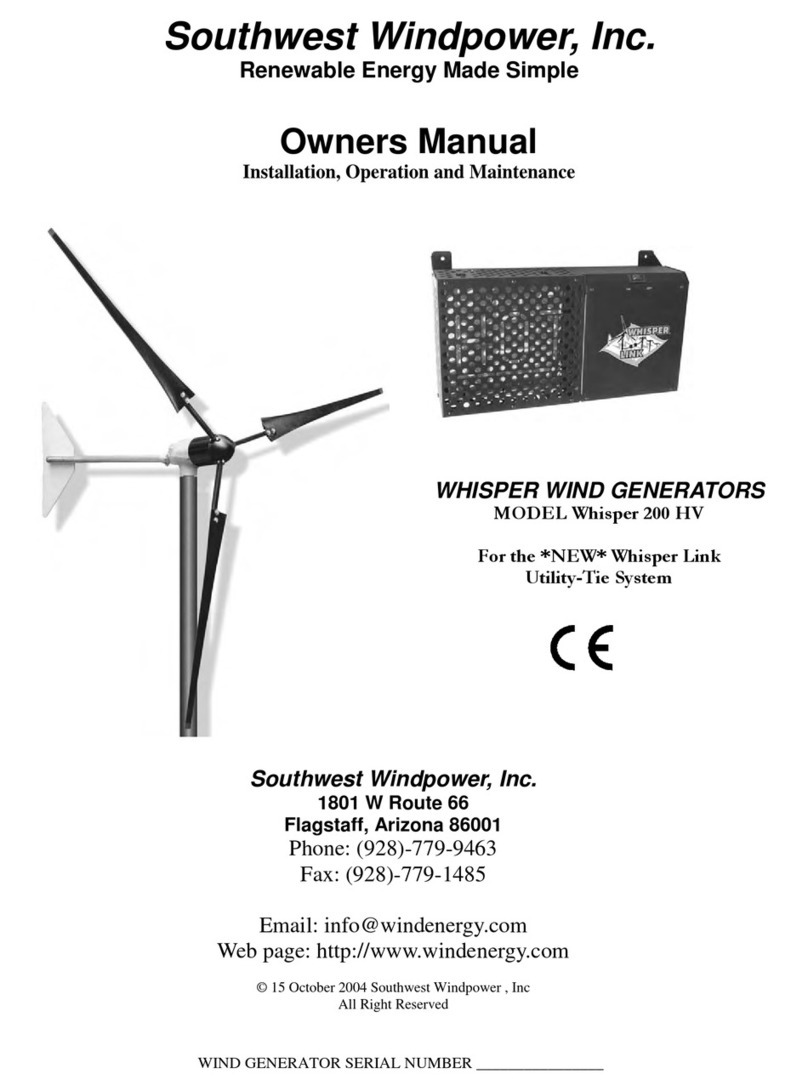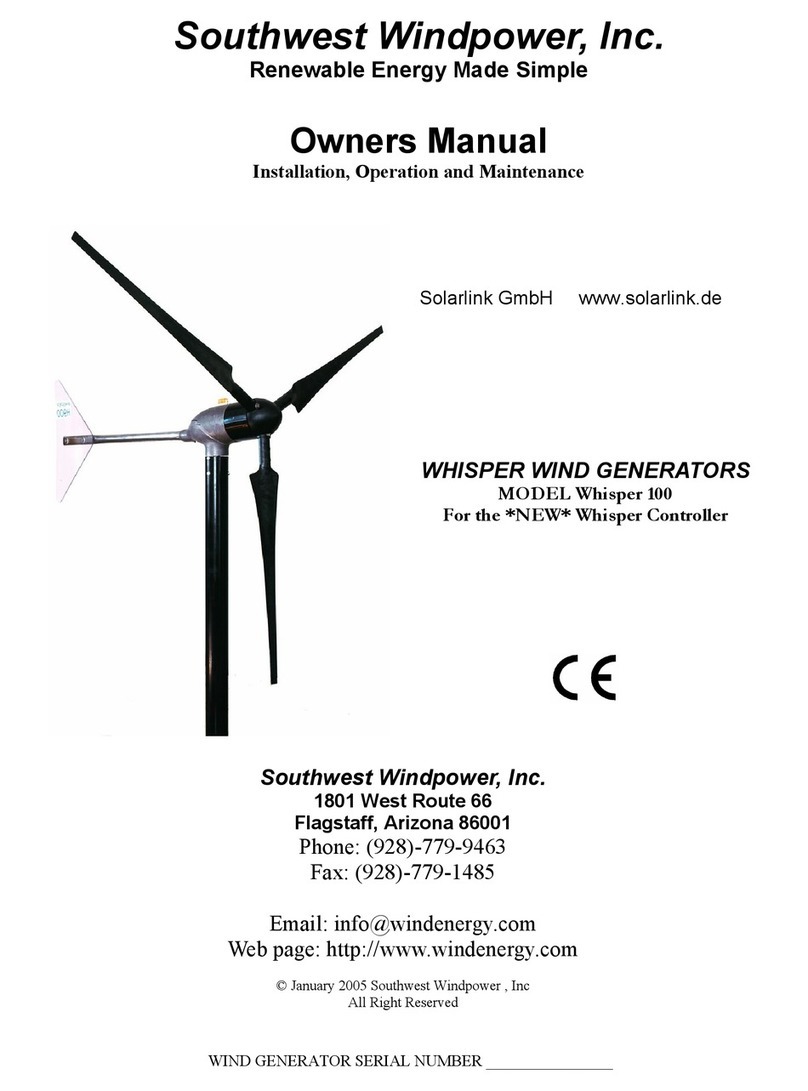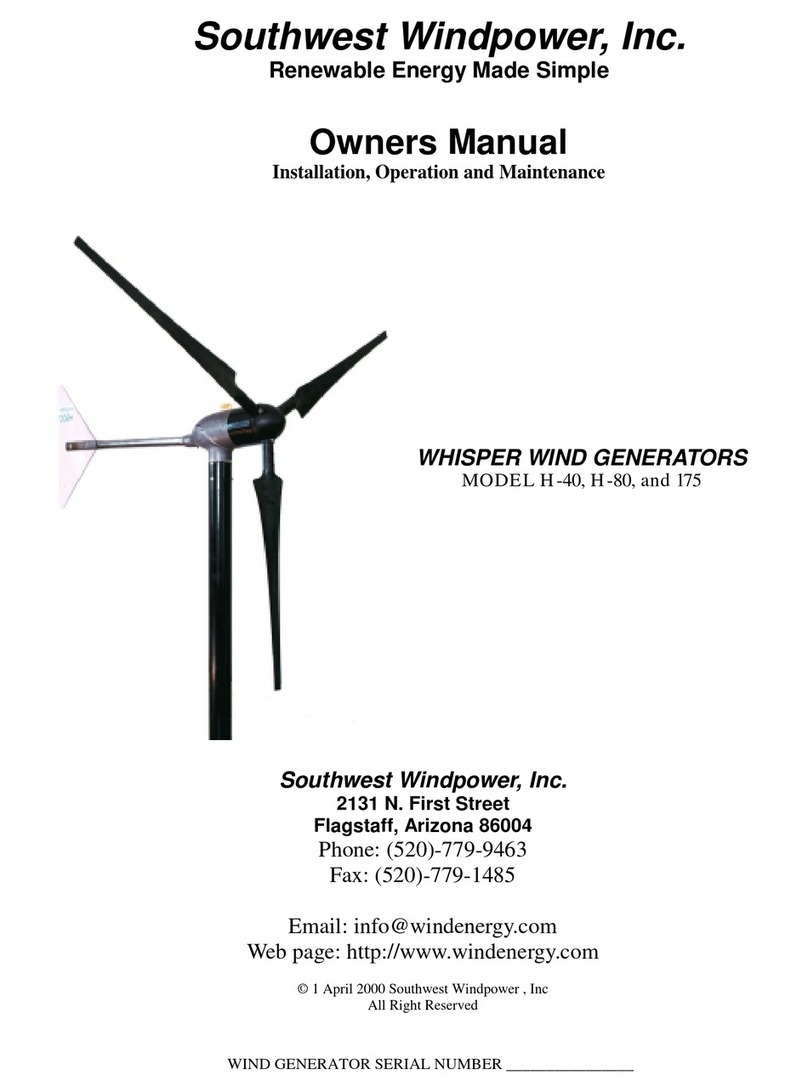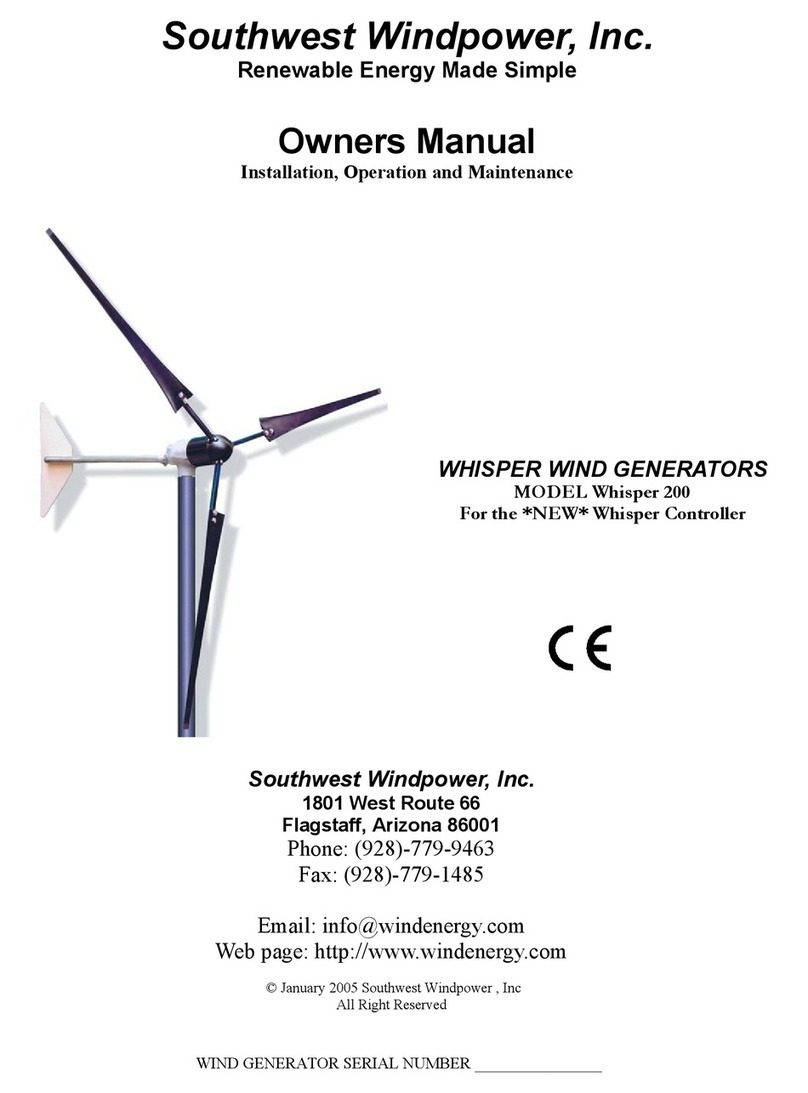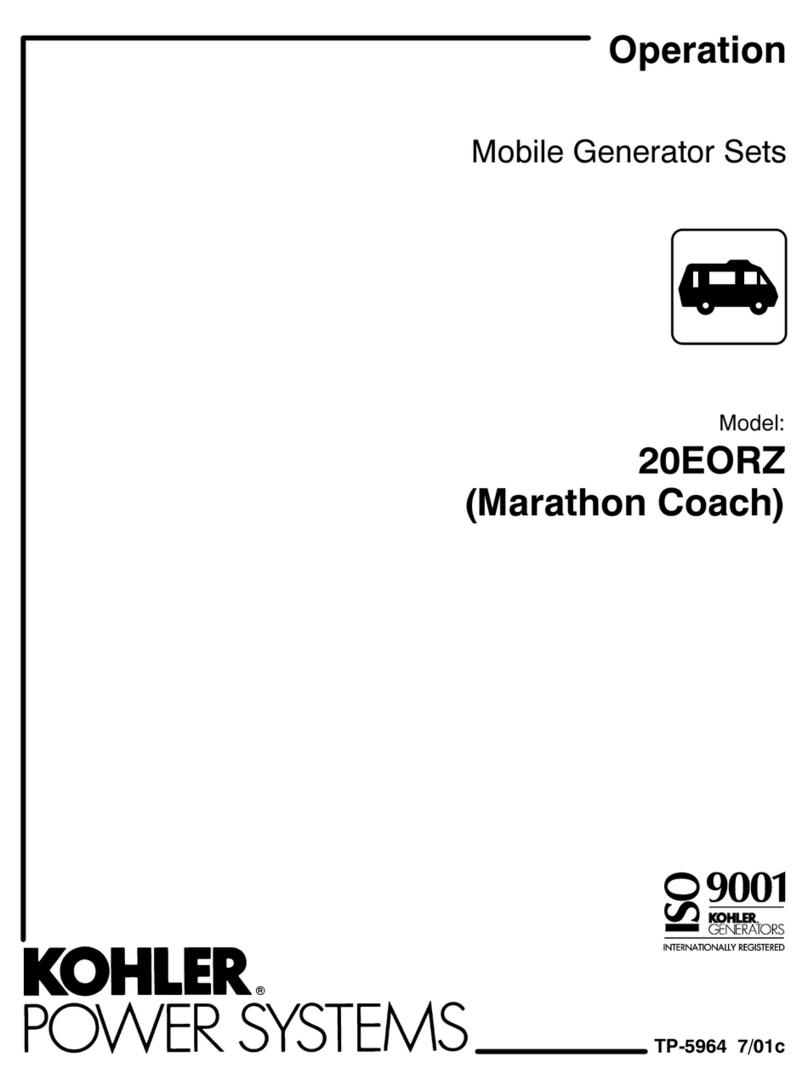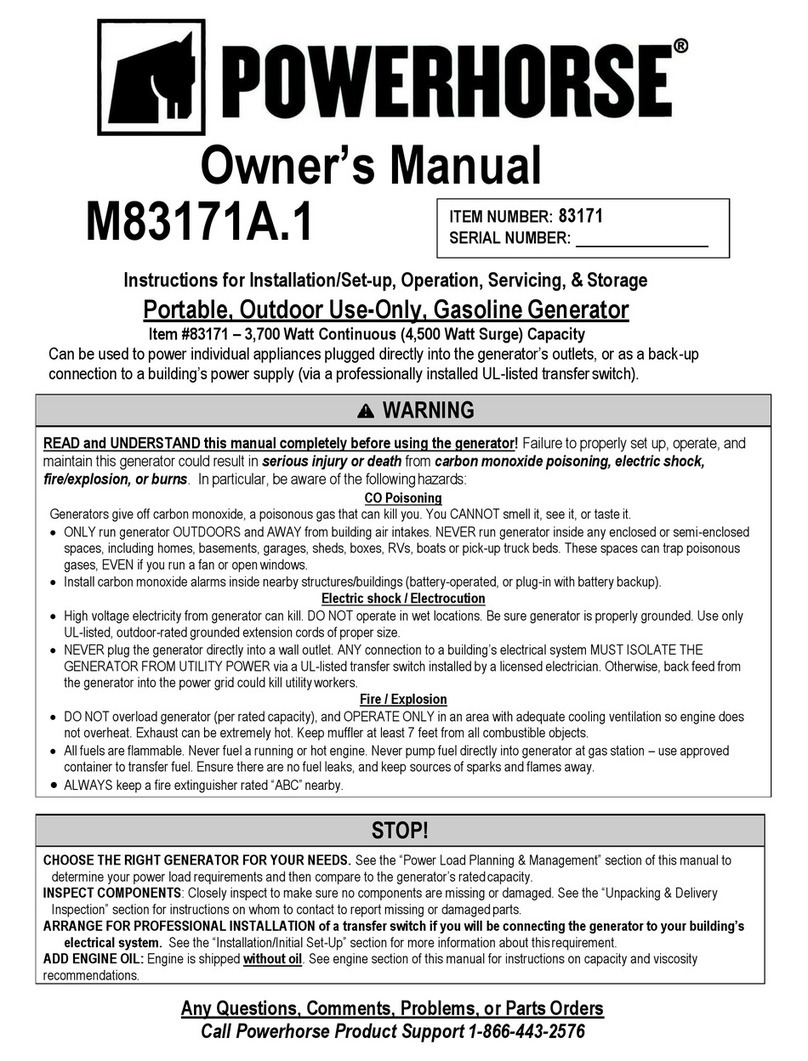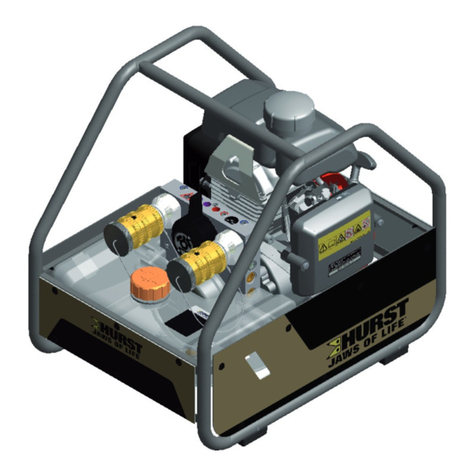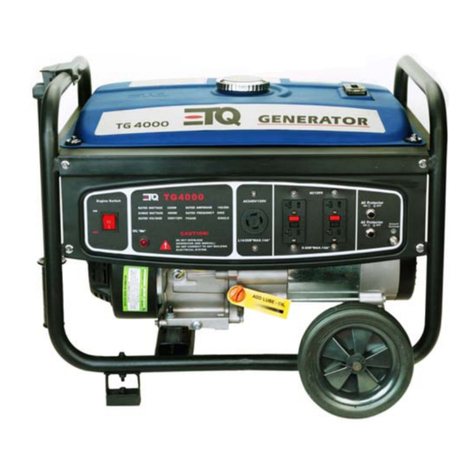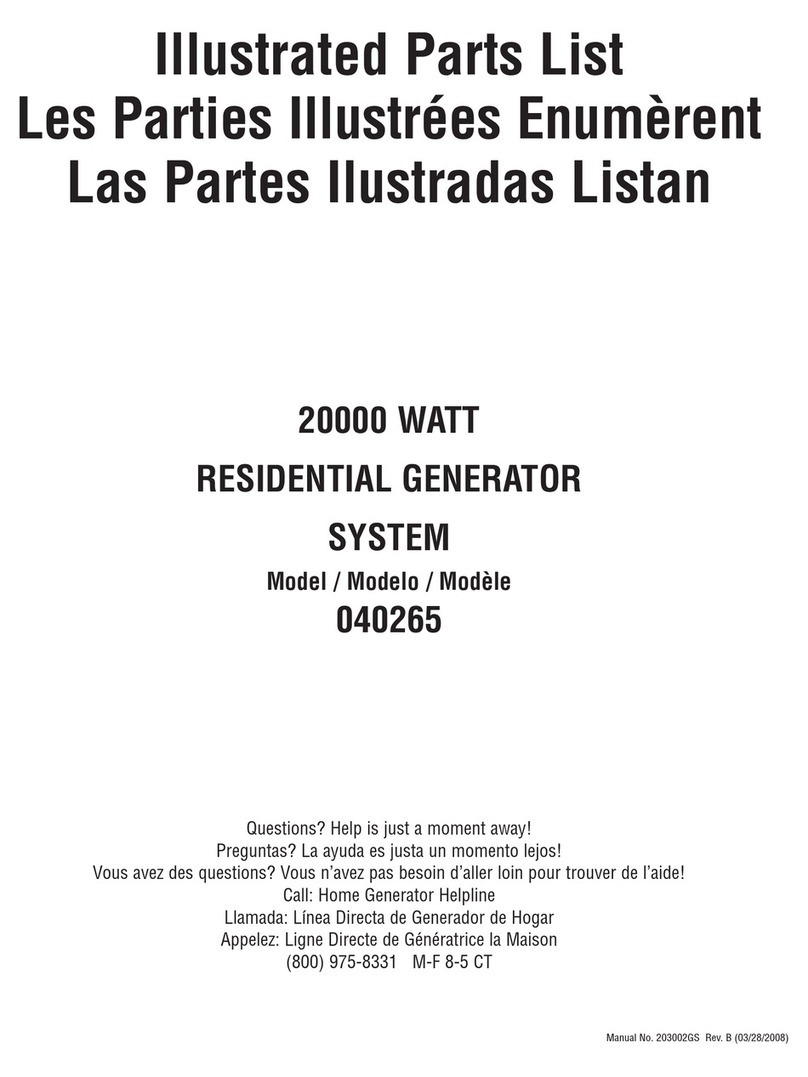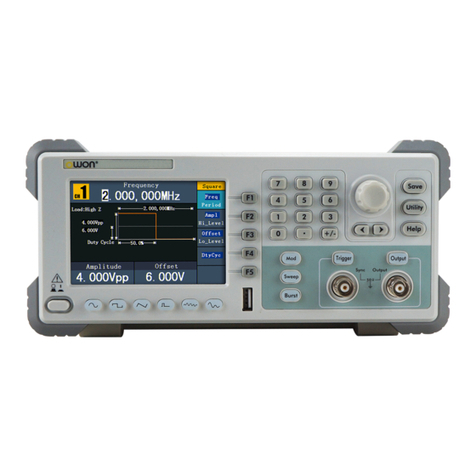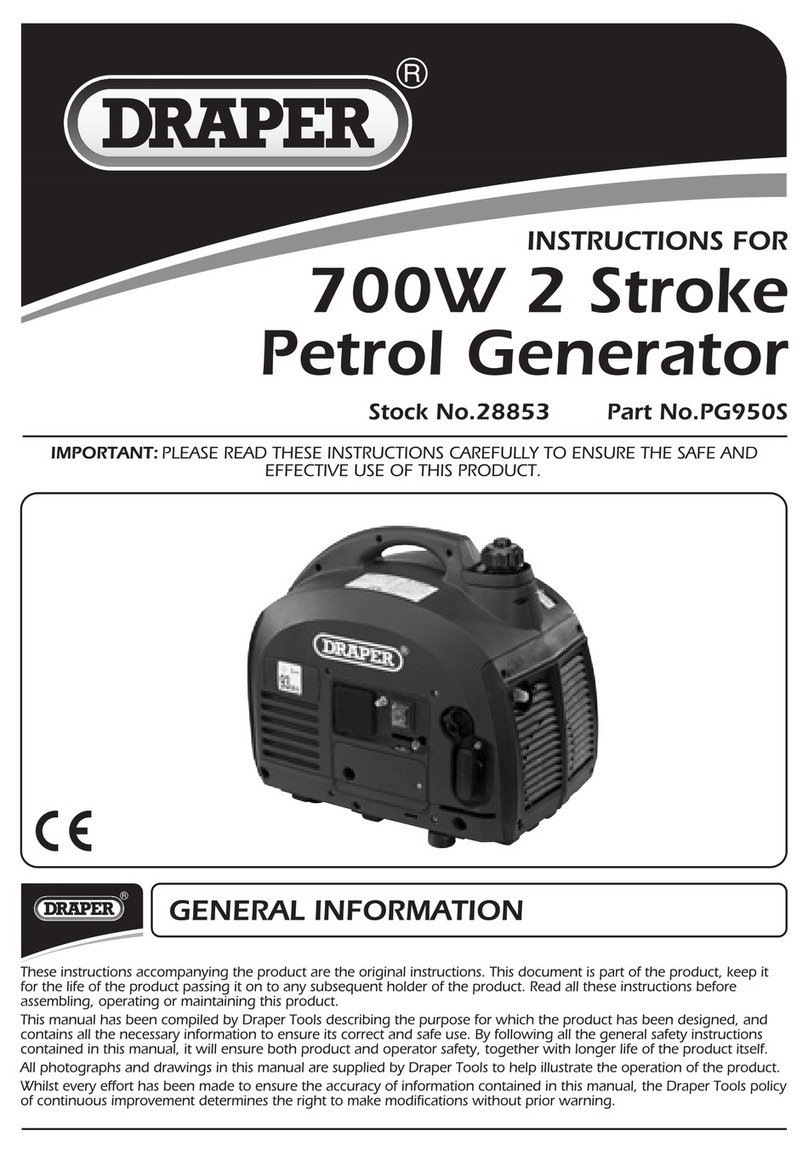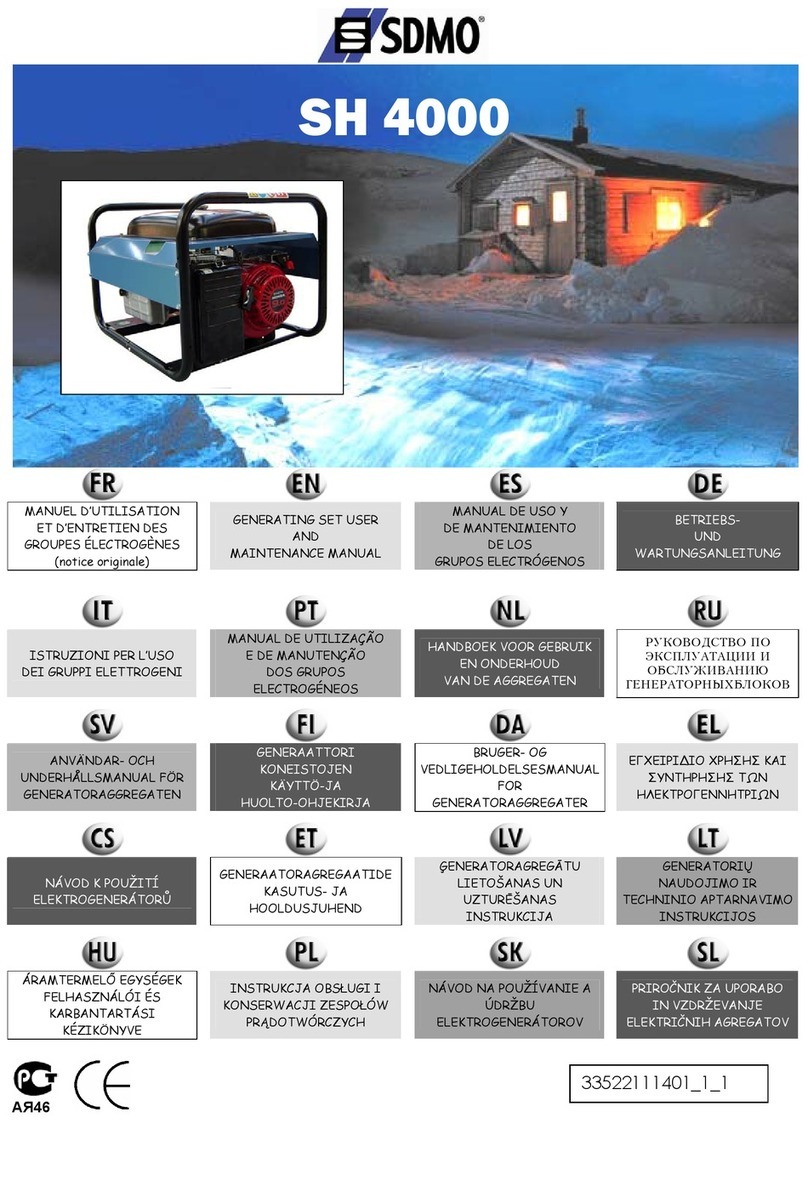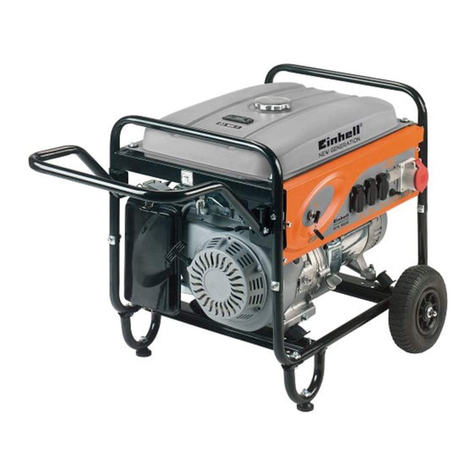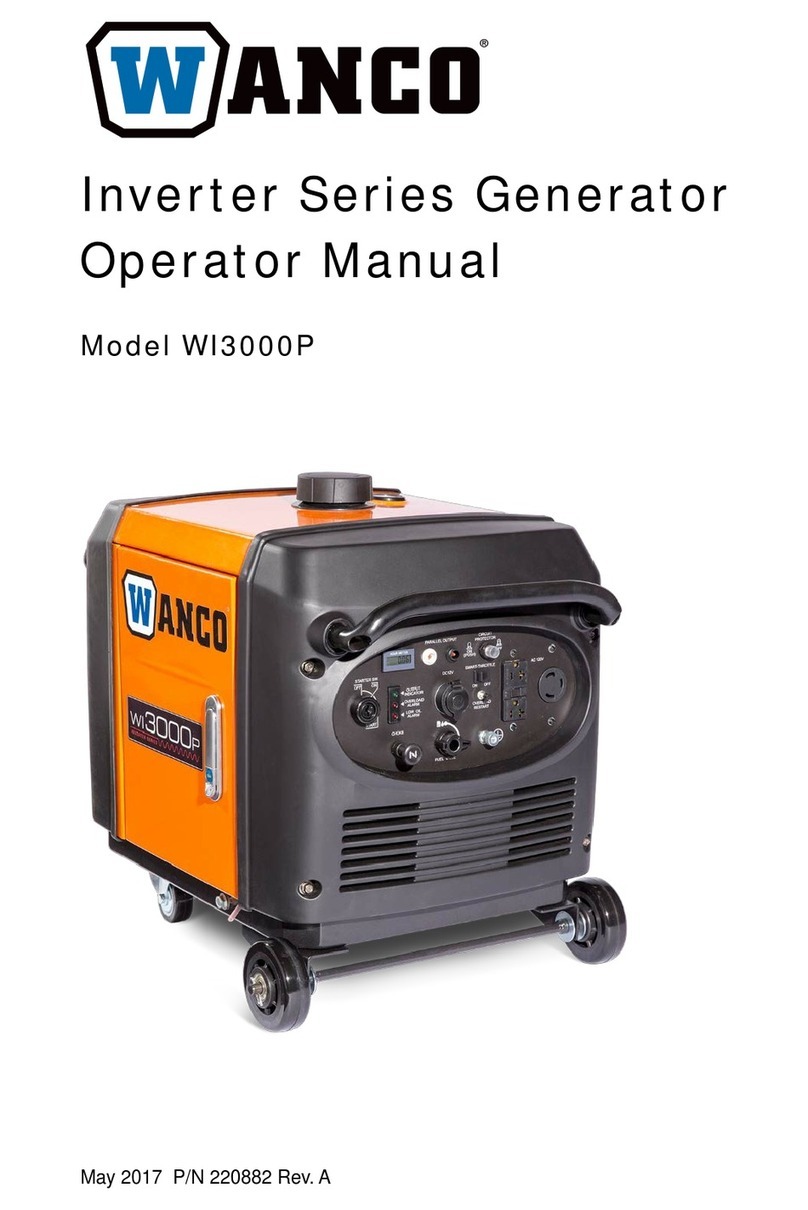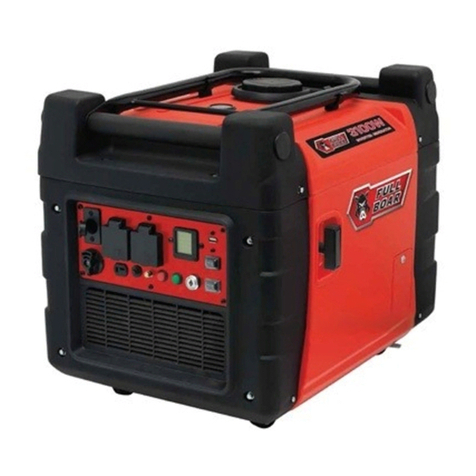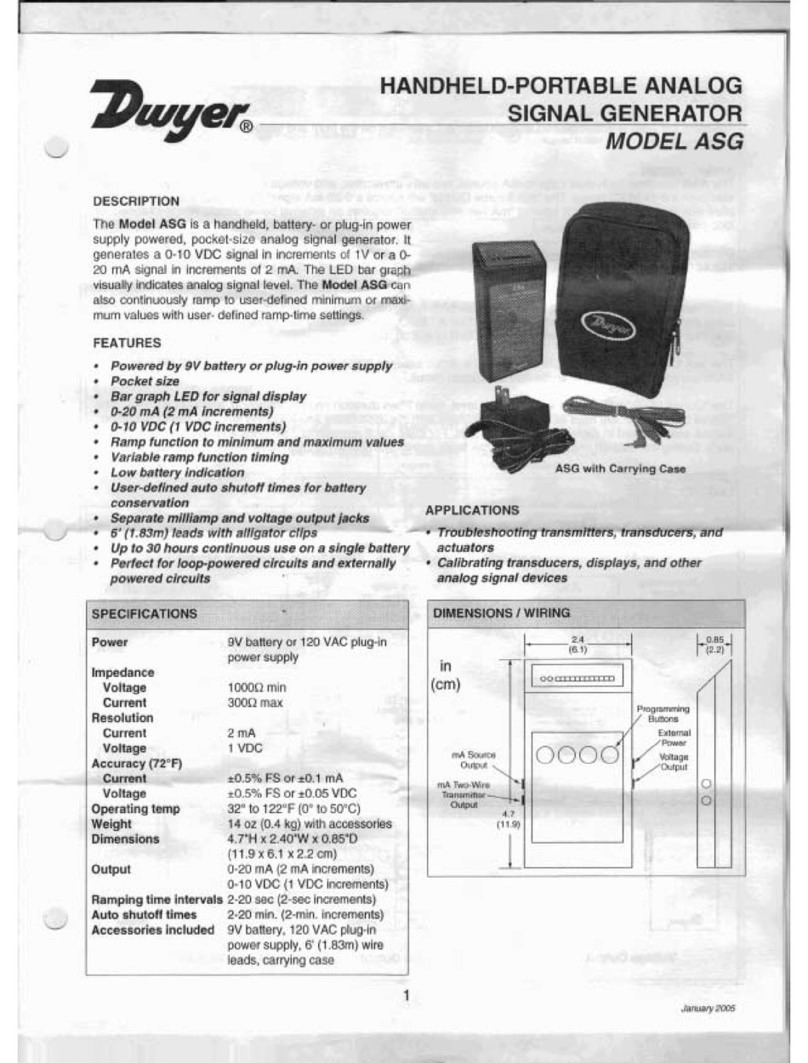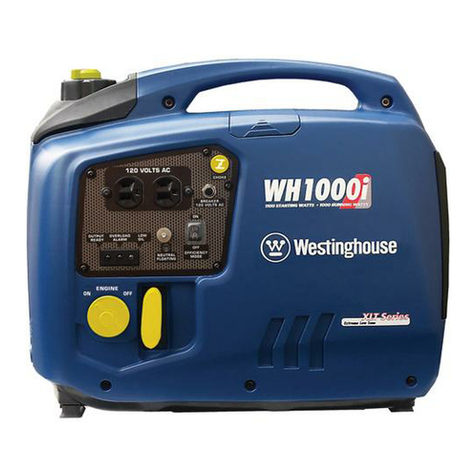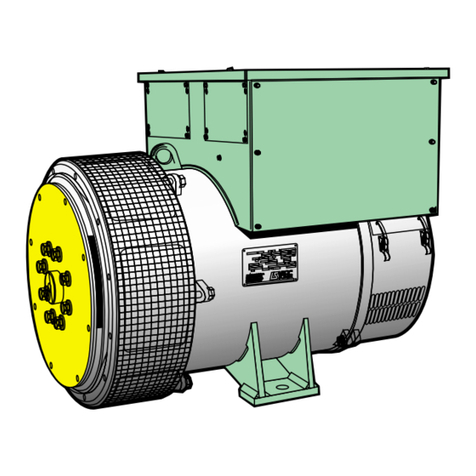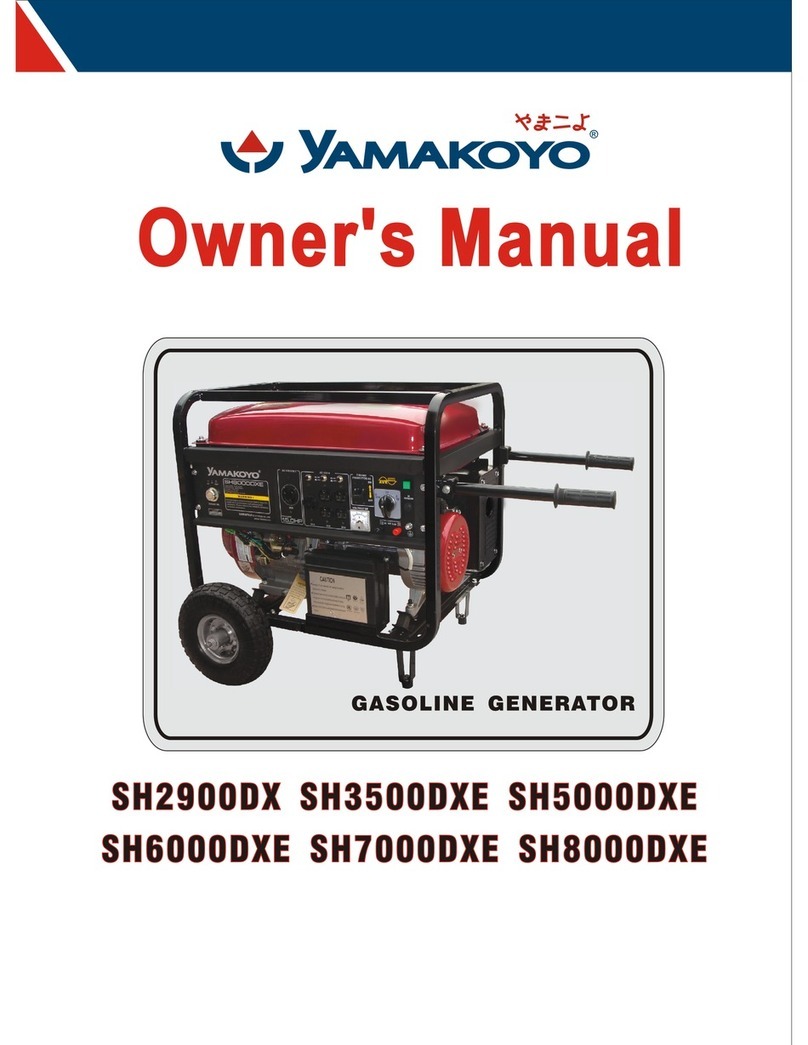AIR 40 Owner’s Manual 5
Contents
1) IMPORTANT SAFETY INSTRUCTIONS _________________ 4
TECHNICAL SPECIFICATIONS ________________________ 7
2) TURBINE ASSEMBLY ________________________________ 8
3) SITING _____________________________________________ 9
4) TOWERS ____________________________________________ 10
4-1 Tower Options ___________________________________ 10
4-1-1 27 ft (8.3 m) Tower Kit_______________________ 11
4-1-2 29 ft (8.8 m) Tower Kit_______________________ 11
4-1-3 45 ft (13.7 m) Tower Kit______________________ 12
4-1-4 Roof Mounting Kit __________________________ 12
5) WIRING OPTIONS ___________________________________ 13-14
5-1 Hybrid System Wiring _____________________________ 15
5-2 Multiple AIR wind turbine Wiring ____________________ 16
5-3 Wire Size _______________________________________ 17-18
5-4 Stop Switch _____________________________________ 18
5-5 Fuses, Circuit Breakers, Ammeter___________________ 19
5-6 Batteries _______________________________________ 19
5-7 Turbine Grounding________________________________ 19-20
5-8 Tower Grounding_________________________________ 20
5-8-1 Electrodes Driven in Soil _____________________ 20
6) INSTALLATION_______________________________________ 21
6-1 Wire Connections ________________________________ 21
6-2 Mounting on Tower _______________________________ 22
6-3 Final Connections ________________________________ 22
7) AIR WIND TURBINE OPERATION______________________ 23-25
7-1 Operational Summary _____________________________ 23
7-2 Operating Modes ________________________________ 23
7-3 Voltage Regulation _______________________________ 24
7-3-1 Adjusting Regulation Voltage__________________ 24
7-3-2 Using an Alternate Charge Controller ___________ 24-25
8) MAINTENANCE ______________________________________ 25
9) TROUBLE SHOOTING________________________________ 26
10) EXPLODED VIEWS & PARTS LIST ____________________ 27-28
11) WARRANTY ________________________________________ 29-31

